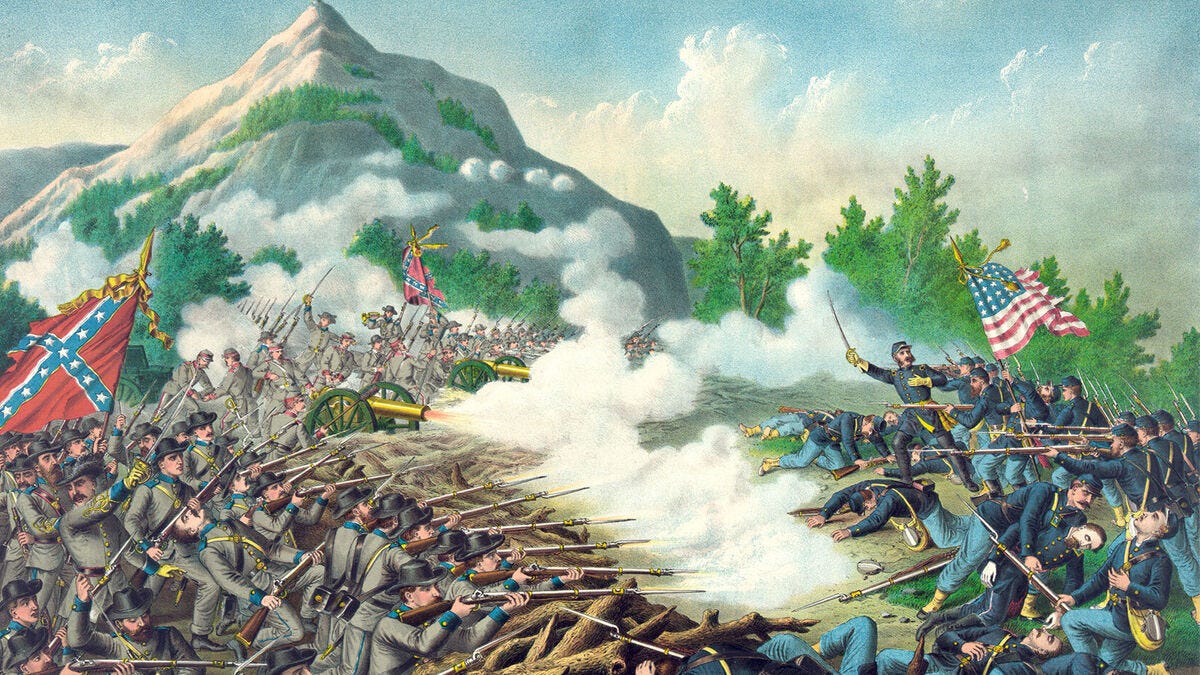I sometimes think the American Civil War looms too large in our popular imagination. It seems to be everywhere in our current discourse about a “divided America.” Hundreds of op-eds and other commentaries reference the four-year bloody conflict in an attempt to connect our current crisis with a period in history that any sane person would wish to avoid.
It’s a reflection of the place of the Civil War in our collective memory or perhaps an indication that Americans know so little of the rest of their history.
The Civil War supposedly offers lessons for our own time of how to avoid another fratricidal conflict. The vast majority of these commentaries offer little more than speculation and downright bad history.
Consider New York Times columnist David French’s latest op-ed. French—like countless others before him—is concerned about the deep political divide, including the recent statement by Representative Republican Marjorie Taylor Greene, who recently suggested that the country needs a “national divorce.”
I sometimes worry about the rhetoric and the ways in which we now consume our news, but I am not worried in the least about this leading to anything remotely resembling the Civil War.
On the other hand, French is “haunted” by it.
I’m haunted by James McPherson’s account of the prewar period in his seminal work, “Battle Cry of Freedom: The Civil War Era.” Describing the South in the run-up to secession and war, he says it was possessed by an “unreasoning fury.” The immediate cause was Northern celebration of John Brown, the abolitionist who attempted to provoke a slave rebellion by seizing the federal arsenal at Harpers Ferry.
In McPherson’s account, Northern support for Brown’s cause “provoked a paroxysm of anger more intense than the original reaction to the raid.” Southern paranoia was so profound that Texas’ secession declaration even included claims that Northern “emissaries” were distributing “poison” to slaves for the purpose of killing white citizens.
The South separated from the North and started a ruinous and futile war not because of calm deliberation, but rather because of hysteria and fear — including hysteria and fear whipped up by the partisan press.
So my question is not “Is divorce reasonable?” but rather, “Are we susceptible to the unreason that triggered war once before?”
There is no question that the language of partisanship, conspiracy, and even worse could be found in newspapers and politicians’ speeches before the Civil War, but you can find this rhetoric at every point in American history.
It’s a failure of imagination and understanding of the broader history of the United States that we pin all of our hopes and fears on the 1860s. The Civil War is not the ultimate measuring rod for the health of the nation.
Perhaps, as historian Jon Grinspan has suggested in his book, The Age of Acrimony: How Americans Fought to Fix Their Democracy, 1865-1915, we could learn more from the period that followed the Civil War.
Americans claim that we are more divided than we have been since the Civil War, but forget that the lifetime after the civil War saw the loudest, roughest political campaigns in our history. From the 1860s through the early 1900s, presidential elections drew the highest turnouts ever reached, were decided by the closest margins, and witnessed the the most political violence. Racist terrorism during Reconstruction, political machines that often operated as organized crime syndicates, and the brutal suppression of labor movements made this the deadliest era in American political history. The nation experienced one impeachment, two presidential elections “won” by the loser of the popular vote, and three presidential assassinations. Control of Congress rocketed back and forth, but neither party seemed capable of tackling the systemic issues disrupting Americans’ lives. Driving it all, a tribal partisanship captivated the public, folding racial, ethnic, and religious identities into two warring hosts. (p. x)
According to Grinspan, we are not living through unprecedented times. “It’s not that our problems are the same as those of the late nineteenth century—often they are strikingly different—but that the era in between was so unusual.” (p. xii)
In other words, perhaps the deep partisan divide and divisive rhetoric that we are currently witnessing has always been our norm.
French closes with a warning:
Animosity is the enemy of American liberty. It is hard to muster the will to defend the rights of people you despise. But it’s also the ultimate enemy of American unity. Hatred and fear are the foundation of “unreasoning fury,” and the fury that divided us once before may well do so again.
All I can say at this point is that some of us need a break from Civil War memory.





Thank you for a well thought out response to David French’s article. Many people do not see secession and war as a part of the larger story of our story. That is why I do not end my book “Mine Eyes Have Seen the Glory: Religion and the Politics of Race in the Civil War Era and Beyond” at the close of the war or the end of Reconstruction. French does not really understand the period, or McPherson’s premise in “Battlecry of Freedom.”
The only thing I would say is we are not guaranteed this idea of America will last in perpetuity.
But I agree that "the Civil War is not the ultimate measuring rod for the health of the nation."